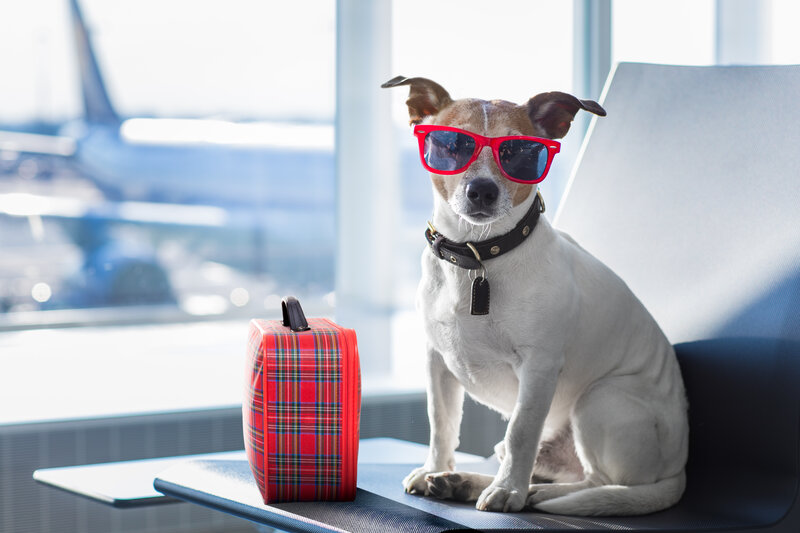
Is your dog a constant traveling companion? The world has opened up to canines-as-companions in so many ways, and we notice dogs in cars, at cafes, trains, and planes. While this warms our hearts, it is also alarming when we see well-meaning humans putting their dogs at risk.
For example, your dog may love having a seat to himself, but if he isn’t secured, he is as at risk for injury or death as the seatbelted humans. If your canine companion loves to sit in your lap, their risk is further elevated. Even minor fender-benders or sudden stops risk serious compression injuries (or worse) when their body is smashed between your body and the steering column. Then there are the safety considerations when traveling by plane or train.
Don’t put yourself at risk for living with the guilt of an unfortunate dog injury or fatality that could have been prevented with these tips.
There is a range of devices designed to comfortably restrain your pet without causing any discomfort. These range from keeping your dog in an appropriate-sized crate in the back seat or the rear of the car, and then restarting the crate so it can’t be suddenly thrown around by impact to “doggy seatbelts” that allow your dog to sit in their favorite seat - strapped in with its own version of a seatbelt attached to a harness.
Here are some examples:
All of these features are available for $100 or less, which is a minimal investment when compared to your dog’s life, wellbeing, and potential vet bills.
Your dog should never, under any circumstances, be allowed to sit in your lap. I know this is a heartbreaking reality for many of you, and it will likely require some re-training if that’s been your norm. However, when a dog sits in a driver’s lap, there are major safety violations in effect.
The dog is at risk of being crushed between your body and the steering column, which can happen as the result of a sudden stop, never mind the effects of a more significant car accident.
By keeping your pet in one, fixed location (preferably with a dog-specific restraint), you exponentially minimize the chance of causing an accident or not being able to drive defensively to avoid a potential accident.
First and foremost, unless you can bring your small dog with you on the flight, no pets should travel on a plane as cargo unless you are going on an extended vacation (two weeks or more). The experience is stressful no matter how prepared the dog is. If you plan to travel with a dog, you need to be as informed and prepared as possible.
The last thing you want is to arrive at the airport with your dog(s), only to find out you’ve misinterpreted something or were unaware of a regulation that prevents you from traveling. So check airline regulations for at least three weeks (or more!) before traveling to make sure you understand all of their rules and regulations.
Some of the most common include:
If you decide it might be better to leave your dog at home, consider sending him to a doggie boot camp, where they’ll be lovingly boarded and receive exceptional doggy training too!
Amtrak also lets dog owners bring their canines along. However, they have very specific guidelines for pet travel by train. Visit their Pets on Amtrak page and read carefully. Some of the regulations in place are:
If you have the time, I recommend taking the train over the plane when it comes to pet stress levels.
Unless you’ve traveled with your pooch since the beginning, travel is bound to make your pet nervous. This leads to excess panting and a need for more water. The combination of nerves and consuming more water means an increased need to go potty. Your dog might get travel sick, for which your vet can prescribe something. Similarly, if necessary, a mild sedative can be used. In other words, you should prepare for all scenarios. Make sure that you test out the effects of the sedative on your dog before the trip. Sometimes they may have a reverse reaction and make your dog more anxious.
The team at Alternative Canine Training wishes you and your beloved dog safe and happy travels. Need help planning doggy travel or interested in learning more about our training programs? Contact us to schedule a consultation.